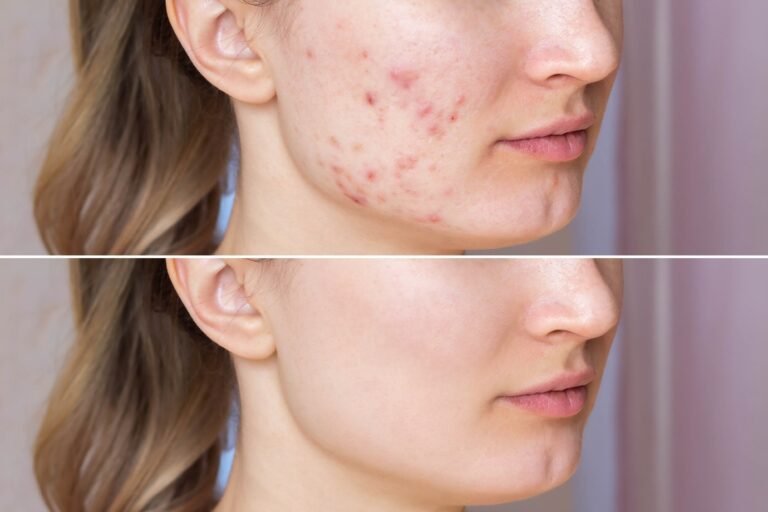When it comes to skin lightening, there are only a handful of ingredients that you can whole-heartedly trust to do what they claim. Unfortunately, many of these ingredients also are too potent at working their magic, without adversely affecting your skin. However, there’s one heaven-sent dynamo that is still yet to get under the limelight, known in the skincare world as Alpha Lipoic acid. This powerhouse of an ingredient is jam-packed with all the goodness that aims at skin lightening, anti-ageing, as well as brightening. Before we get into the nitty-gritty of how alpha-lipoic acid or ALA works its magic, let’s understand a little bit more about the ingredient.
What is alpha-lipoic acid?
Contrary to popular myth, alpha-lipoic acid is not a vitamin. This vitamin-like molecule is aderivative of octanoic acid, making it a fatty acid.
How does ALA work?
ALA or alpha-lipoic acid is a potent tyrosinase inhibitor. Simply put, ALA inhibits the enzyme (tyrosinase) that stimulate the melanocytes (cells in your skin) to produce melanin. Melanin is a pigment that protects your skin from UV-induced DNA damage. People with a darker skin tone have more melanin as compared to someone with a lighter skin tone. However, the production of melanin increases in cases of any kind of injury to your skin, which also includes acne. This happens in a localized area of the skin, producing focal areas of hyperpigmentation. By decreasing the synthesis of melanin, ALA has a direct impact on your skin tone as it induces depigmentation.

Additionally, according to various research articles, ALA is almost 40,000 times more potent (as an antioxidant) than Vitamin C and Vitamin E. When the sun’s damaging rays reach your skin, they penetrate the deeper layers of the skin and enter your skin cells. They will then induce DNA and cellular damage and cause the release of free radicals. These free radicals are notorious to create a cascade of destructive reactions. ALA is known as a free radical scavenger, thus acting as a potent anti-oxidant.
But what does this mean for you?
Alpha-lipoic acid is an ingredient made of all the good things. By decreasing the synthesis of melanin, reduces hyperpigmentation and evens out skin tone, making it the perfect skin-lightening ingredient. Additionally, as it is a potent antioxidant, it scavenges most of the free radicals, rendering your skin bright and healthy. By repairing the DNA damage caused by the same radicals, ALA makes for a reliable ingredient if your aim is anti-ageing. Smoking (or cigarette smoke) is another factor that might contribute to the deterioration of your skin. Alpha-lipoic acid is known to reverse the damage caused by cigarette smoke. Have you heard of “the mask of pregnancy”? We’re talking about melasma, and guess what? ALA works for that too!
The best thing about alpha lipoic acid is that it is soluble in both lipid and water- making it the perfect match for both oil and water-based formulations- moisturizers, serums, masks- you name it!
Apart from this, ALA has very important medical benefits too. It is used in conditions such as multiple sclerosis, Alzheimer’s disease, diabetes, etc.
Sources of Alpha-lipoic acid: which is the best one?
ALA is one of the important things that can be produced by your body. It is also found in green leafy vegetables like spinach and broccoli; potatoes; rice bran; yeast; and kidney.
Cosmetically, ALA is formulated mainly into moisturizers or serums. However, unless the source is reliable and ALA comes pretty high up on the ingredients list, you cannot reap its benefits to the maximum. In comes your saviour: ALA as a supplement. Punh: skin radiance tablets will be your best buddy when it comes to skin lightness, radiance, and damage control. In addition to ALA, Punh: tablets for skin lightening contain glutathione, curcumin, and astaxanthin as some of the many star ingredients that help you achieve glowing skin by decreasing free radicals, increasing cell turnover, and decreasing signs of ageing. You’ll notice results after consuming the tablets consistently for three months.

